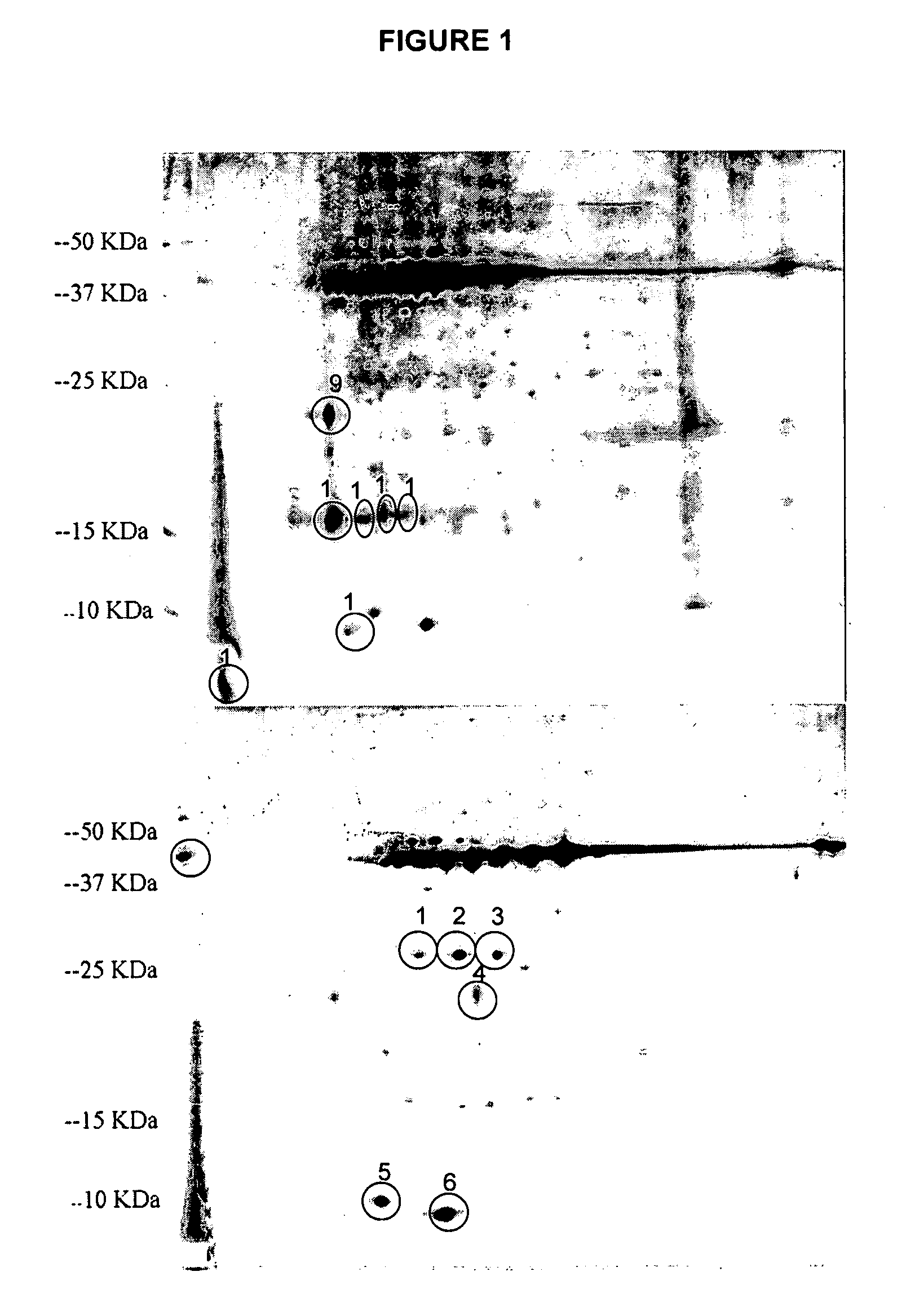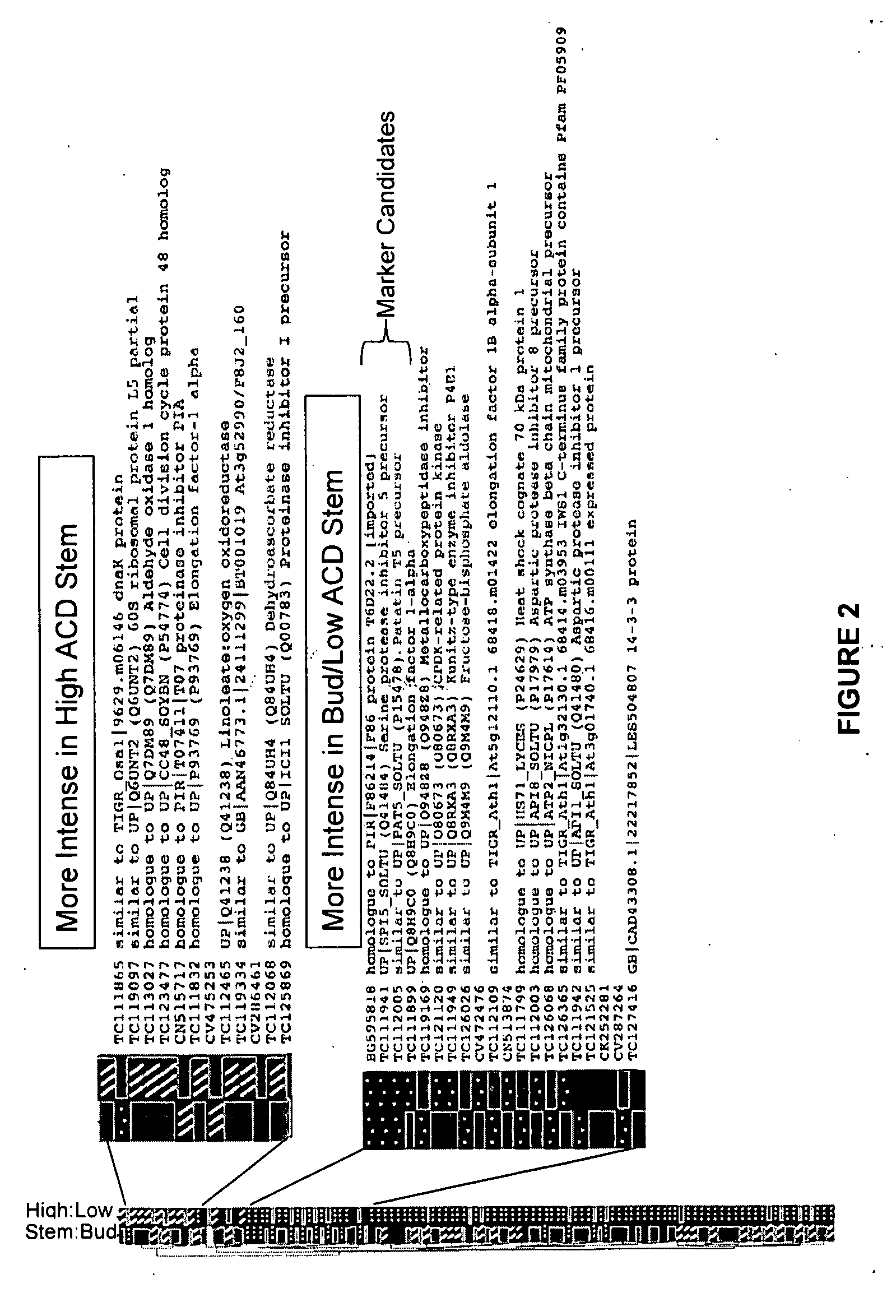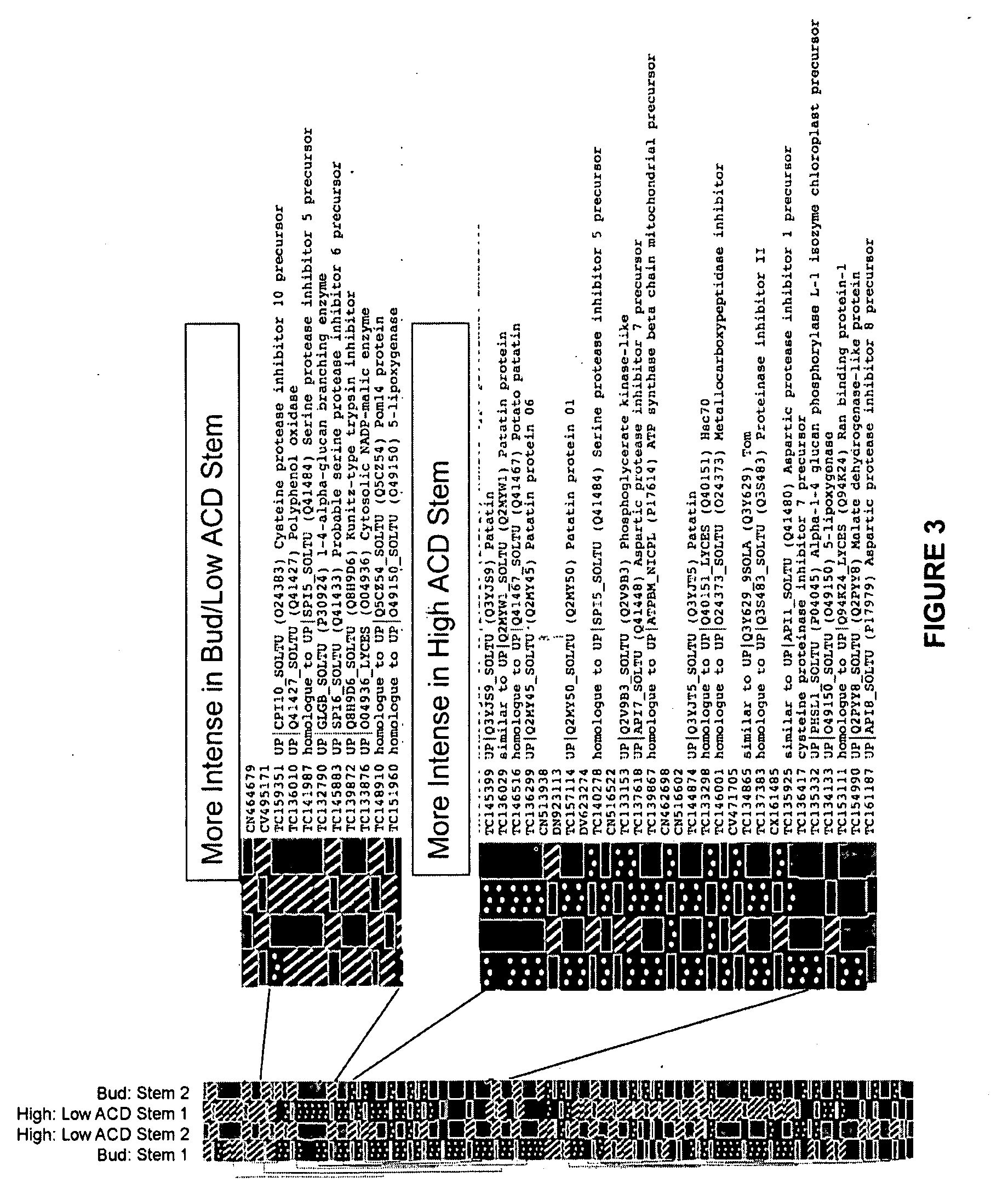Proteins Involved in After-Cooking Darkening in Potatoes
- Summary
- Abstract
- Description
- Claims
- Application Information
AI Technical Summary
Benefits of technology
Problems solved by technology
Method used
Image
Examples
example 1
Materials and Methods
Tuber Sources and Sampling
[0084]Potato cultivars used commercially are tetraploid, making analysis of desirable and undesirable traits much more complex. Therefore, the use of diploid clones to study complex traits is recommended to simplify genetic analysis (Ortiz and Peloquin 1994). Diploid family 13610, used in this study, was originally provided by the AAFC Potato Research Center, Fredericton, New Brunswick and further propagated and evaluated as part of Dr. Wang-Pruski's research program at the Nova Scotia Agricultural College, Truro, Nova Scotia. The family consists of progeny of two diploid parents, one showing severe ACD and another showing less severe ACD. Potato clones from this family had been previously evaluated for ACD using digital imaging technology (Wang-Pruski 2006) over three growing seasons. This particular family was shown to be genetically stable in some clones (Wang-Pruski et al. 2003) and the range of ACD in the family is significantly se...
example 2
Validation of Candidate Genes Related to or Associated with ACD of Potato Tubers Using Real-Time Quantitative RT-PCR
SUMMARY
[0170]Proteins related to or associated with ACD were determined from the comparative proteomic analysis of ACD described in Example 1. In particular, a comparison of the protein profiles of tubers with high ACD to tubers with low ACD identified a set of proteins involved in, or related to ACD. To confirm the functions of these proteins and to further understand the molecular mechanism of ACD, experiments were performed on ten candidate or target proteins at the gene expression level using real-time quantitative RT-PCR (qRT-PCR) to validate the relationship of these proteins and ACD. Thus, this example compared the relative gene expression levels for the proteins previously identified as being related to ACD in tubers with high degree of ACD and low degree of ACD using a real-time qRT-PCR technique.
[0171]Gene-expression analysis is important in biological resear...
example 3
Polyphenol Oxidase is Related to Both after-Cooking Darkening and Enzymatic Browning
Abstract
[0193]The present example identified a gene marker (gene for polyphenol oxidase, PPO) that is related to both potato after-cooking darkening (ACD) and enzymatic browning (EB), both of which are serious quality defects of potatoes. After-cooking darkening (ACD) is one of the most undesirable quality traits in potatoes. It occurs in every potato growing area in the world. It also occurs after cooking in many fruits and vegetables. Enzymatic browning of raw fruits and vegetables during storage and processing is a significant problem in the food industry and is believed to be one of the main causes of quality loss during post-harvest handling. This is a widespread phenomenon that causes loss of quality and is of major economic importance. The browning can cause deleterious changes in the appearance and organoleptic properties of the food product, resulting in reduced consumer acceptance. Enzyme P...
PUM
| Property | Measurement | Unit |
|---|---|---|
| Temperature | aaaaa | aaaaa |
| Molar density | aaaaa | aaaaa |
| Temperature | aaaaa | aaaaa |
Abstract
Description
Claims
Application Information
 Login to View More
Login to View More - R&D
- Intellectual Property
- Life Sciences
- Materials
- Tech Scout
- Unparalleled Data Quality
- Higher Quality Content
- 60% Fewer Hallucinations
Browse by: Latest US Patents, China's latest patents, Technical Efficacy Thesaurus, Application Domain, Technology Topic, Popular Technical Reports.
© 2025 PatSnap. All rights reserved.Legal|Privacy policy|Modern Slavery Act Transparency Statement|Sitemap|About US| Contact US: help@patsnap.com



